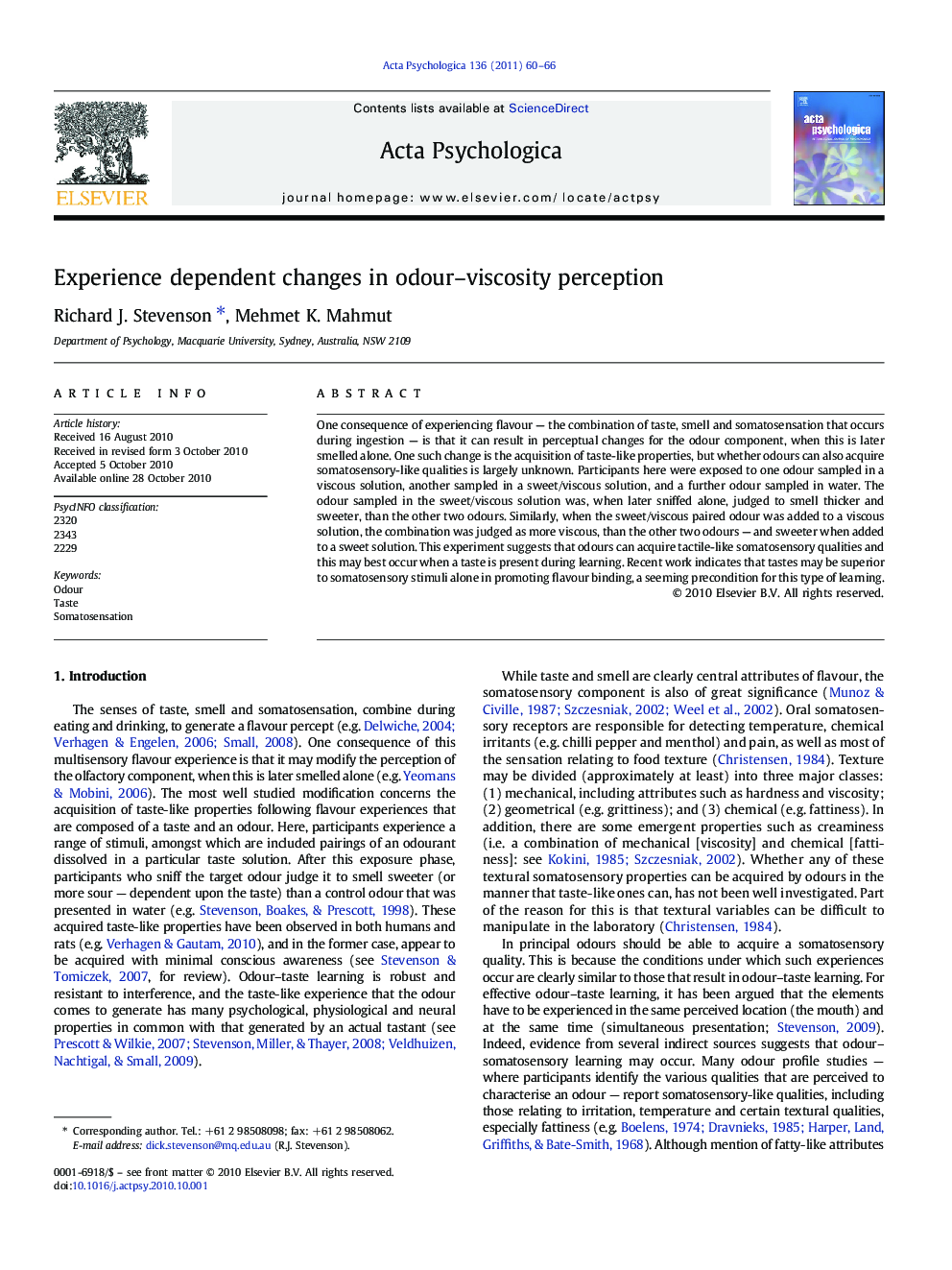| Article ID | Journal | Published Year | Pages | File Type |
|---|---|---|---|---|
| 920304 | Acta Psychologica | 2011 | 7 Pages |
One consequence of experiencing flavour — the combination of taste, smell and somatosensation that occurs during ingestion — is that it can result in perceptual changes for the odour component, when this is later smelled alone. One such change is the acquisition of taste-like properties, but whether odours can also acquire somatosensory-like qualities is largely unknown. Participants here were exposed to one odour sampled in a viscous solution, another sampled in a sweet/viscous solution, and a further odour sampled in water. The odour sampled in the sweet/viscous solution was, when later sniffed alone, judged to smell thicker and sweeter, than the other two odours. Similarly, when the sweet/viscous paired odour was added to a viscous solution, the combination was judged as more viscous, than the other two odours — and sweeter when added to a sweet solution. This experiment suggests that odours can acquire tactile-like somatosensory qualities and this may best occur when a taste is present during learning. Recent work indicates that tastes may be superior to somatosensory stimuli alone in promoting flavour binding, a seeming precondition for this type of learning.
